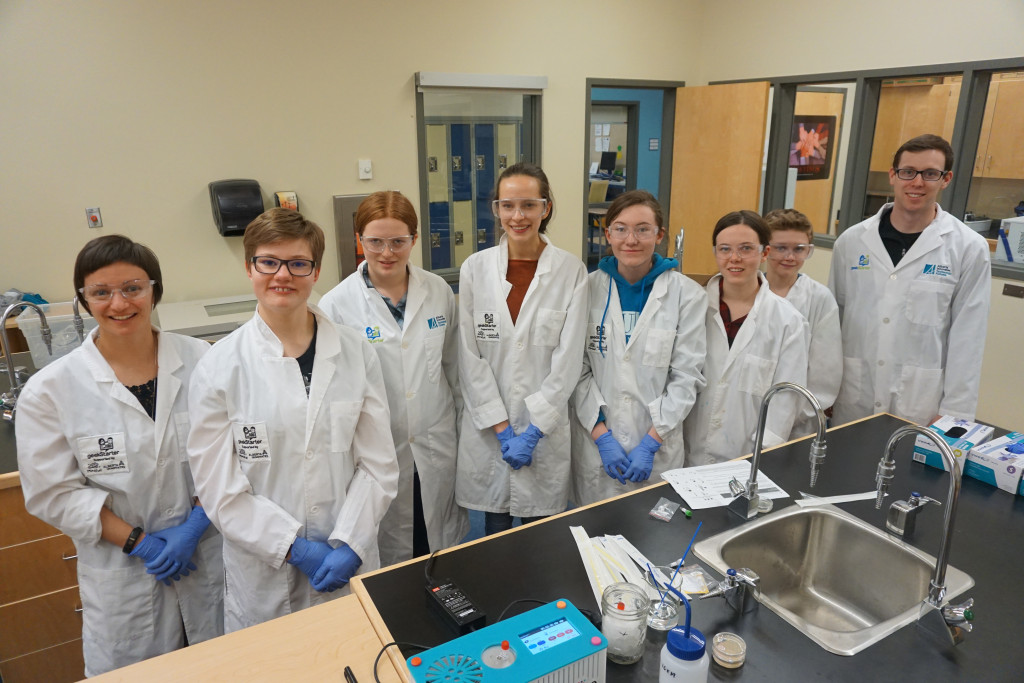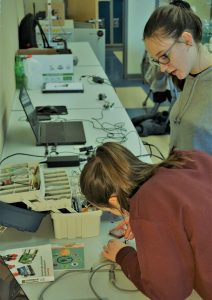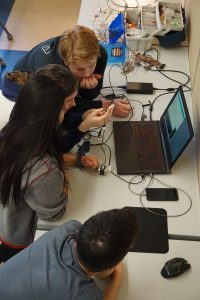Our Lady of the Snows Catholic Academy – Canmore
The Re-purposing Lignin Project
Project Summary & Updates
Initially, our synthetic biology team chose the domain of prosthetic technology for our project. A workshop with our mentors helped our team to transition from this field to investigating the production of rayon, a textile that has been proven to aid the body in healing from skin grafts, among other uses.
Rayon is made from cellulose, a natural component of many proteins, and goes through a treatment process with extreme environmental and health impacts. In particular, the transformation of raw cellulose to cellulose xanthate (Xanthation) uses the carcinogenic chemical carbon disulfide.
Currently, we are researching the possibility of a biological alternative for this step to reduce the use of carbon disulfide. To find a viable, safer alternative, we are considering engineering cells to produce enzymes, such as cellulases, capable of refining the cellulose.
Through this project, we hope to make a positive change in both environmental and medical science.
March 2020 Update
Initially, our synthetic biology team chose the domain of prosthetic technology for our project. A workshop with our mentors helped our team transition from this field to investigating the production of rayon, a textile that has been proven to aid the body in healing from skin grafts. Upon researching the textile industry, our team discovered the structural material of lignin, and its potential applications.
Lignin is the second most abundant organic polymer on Earth and acts as adhesive in plants, holding together cellulose and hemicellulose in cell walls. Each year, the paper industry produces approximately 50 Mtons of lignin as a waste product. The majority of lignin is burned as a low-grade fuel to power pulp and paper mills. It is thought that degraded lignin has many potential alternative applications.
Currently, we are researching the potential uses of lignin as a binding agent, emulsifier, paint and fuel. We are researching the process of degrading lignin so these high-value products may be created. We are planning on engineering cells to produce enzymes that are capable of degrading lignin.
Through this project, we hope to make a positive change in the environmental, and pulp and paper industries.
Rayon is made from cellulose, a natural component of many proteins, and goes through a treatment process with extreme environmental and health impacts. In particular, the transformation of raw cellulose to cellulose xanthate (Xanthation) uses the carcinogenic chemical carbon disulfide.
Currently, we are researching the possibility of a biological alternative for this step to reduce the use of carbon disulfide. To find a viable, safer alternative, we are considering engineering cells to produce enzymes, such as cellulases, capable of refining the cellulose.
Through this project, we hope to make a positive change in both environmental and medical science.
March 2020 Update
Initially, our synthetic biology team chose the domain of prosthetic technology for our project. A workshop with our mentors helped our team transition from this field to investigating the production of rayon, a textile that has been proven to aid the body in healing from skin grafts. Upon researching the textile industry, our team discovered the structural material of lignin, and its potential applications.
Lignin is the second most abundant organic polymer on Earth and acts as adhesive in plants, holding together cellulose and hemicellulose in cell walls. Each year, the paper industry produces approximately 50 Mtons of lignin as a waste product. The majority of lignin is burned as a low-grade fuel to power pulp and paper mills. It is thought that degraded lignin has many potential alternative applications.
Currently, we are researching the potential uses of lignin as a binding agent, emulsifier, paint and fuel. We are researching the process of degrading lignin so these high-value products may be created. We are planning on engineering cells to produce enzymes that are capable of degrading lignin.
Through this project, we hope to make a positive change in the environmental, and pulp and paper industries.







